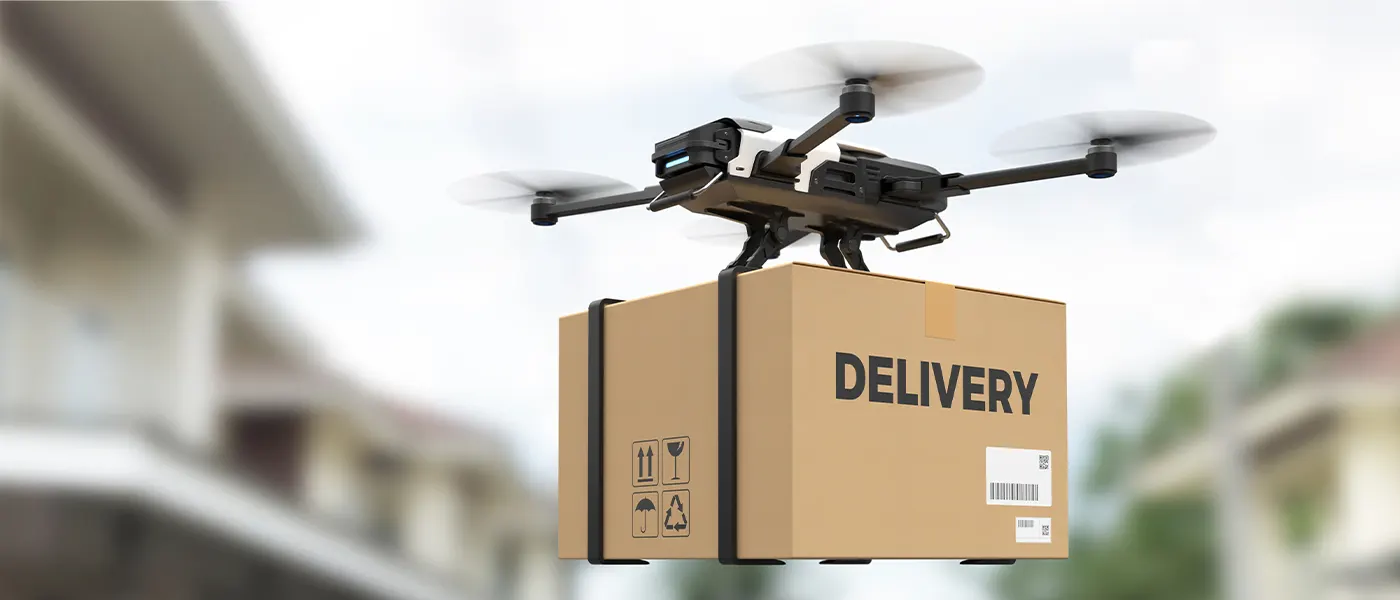As businesses adapt to multichannel selling, the key is to strike a balance between inventory management across both online and offline sales channels. This helps e-commerce businesses avoid an out-of-stock situation when customers enter their stores. And in an era where customers switch to competition in an instant, the emphasis lies on strengthening both the mid mile and the last mile delivery in Australia.
This guide breaks down last-mile delivery and Direct Store Delivery (DSD), helping you save money, deliver faster, and keep your customers satisfied all throughout. Whether you’re an established enterprise in Australia or considering expanding, this guide possesses the secrets to delivery success! Let’s dive in!
What is Last Mile Delivery?

Last mile delivery refers to the final stage of the delivery process, the movement of goods from a distribution center or transportation hub directly to the end customer’s location, typically a residence or business. This critical step holds immense importance in the Australian e-commerce landscape, impacting customer satisfaction, operational efficiency, and overall business success. Here are a few reasons as to why last mile delivery is important in Australia:
- Vast Geography: Australia’s expansive landmass and dispersed population present unique challenges for logistics providers. Ensuring efficient and cost-effective deliveries across diverse urban and rural locations necessitates innovative solutions.
- Growing E-commerce: The Australian e-commerce market is experiencing exponential growth, fueled by consumer demand for convenience and fast delivery times. This surge necessitates robust and adaptable last mile delivery infrastructure.
- Customer Expectations: Australian consumers increasingly prioritise fast and convenient delivery options. Meeting these expectations, including same-day delivery and flexible scheduling, plays a pivotal role in customer satisfaction and loyalty.
- Competitive Landscape: In a highly competitive e-commerce environment, efficient last mile delivery offers a distinct advantage. Businesses that can offer faster, more cost-effective, and transparent delivery options gain a competitive edge.
Challenges of Last Mile Delivery in Australia
While last mile delivery plays a crucial role in Australian e-commerce, it poses numerous challenges unique to the vast and diverse landscape. Here are four key complexities businesses must navigate:
1. Logistics Limitations
Australia’s expansive geography and sparsely populated regions create significant logistical hurdles. Establishing cost-effective delivery networks across diverse urban and rural areas requires innovative solutions beyond traditional transportation methods. Additionally, infrastructure limitations in some regions can create access and efficiency issues.
2. Cross Border Logistics
Cross-border e-commerce thrives on efficient international deliveries, but last-mile hurdles can hinder customer satisfaction. Direct Store Delivery (DSD) offers a solution by strategically placing inventory within the target country, reducing reliance on international shipping and customs delays. Combining DSD with last-mile delivery expertise ensures efficient deliveries even in challenging locations, fostering a seamless cross-border e-commerce experience for international customers.
3. Keeping Pace with Customer Demands
Australian consumers expect fast, convenient, and often personalized delivery options. Meeting these evolving expectations while maintaining profitability can be challenging. Demands for same-day delivery, flexible scheduling, and real-time tracking necessitate continuous adaptation and investment in new technologies.
4. Integrating Eco-Friendly Practices
Balancing sustainability with efficiency remains a significant challenge. Implementing environmentally friendly solutions like packaging options helps your e-commerce brand reduce its carbon footprint. Finding the optimal balance between reducing carbon footprint and maintaining a great unboxing experience requires innovative approaches and collaboration across the industry.
Strategies for Optimizing Last Mile Delivery
When it comes to Australian e-commerce, optimising last-mile is important to customer delight, building loyalty and increasing your brand’s credibility in the e-commerce arena. Here are key strategies Australian enterprises can use to enhance their final delivery stage:
Syncing Inventory, Technology, and Logistic
- Unified Data Platform: Establish a centralized platform integrating inventory levels, customer orders, and delivery data for optimized route planning and resource allocation.
- API Integration: Leverage Application Programming Interfaces (APIs) to automate data exchange between systems, eliminating manual processes and ensuring accuracy.
- Collaborative Communication: Foster open communication between departments and logistics partners to anticipate potential issues and respond swiftly.
Offering Flexible Delivery Options
- Multiple Delivery Timeframes: Offer options ranging from same-day or express delivery to scheduled appointments, catering to diverse preferences.
- International Shipping: Allow customers to place their orders from any locations, which not only broadens your selling demographic but also increases customer turnout.
- Returns and Exchanges: Simplify return and exchange processes to build trust and encourage repeat business.
Investing in Real-Time Tracking and Communication
- Real-Time Tracking: Implement systems that enable customers to track their orders in real-time, providing peace of mind and managing expectations.
- Proactive Communication: Offer automated notifications at key stages of the delivery process, such as dispatch, estimated arrival time, and delivery completion.
- Feedback Channels: Establish clear channels for feedback and address customer concerns promptly, demonstrating responsiveness and commitment to service.
What is Direct Store Delivery And its Benefits
As the footfal to retail stores increase, direct store delivery helps Australian e-commerce brands offer a better warehouse to shelf experience. Direct Store Delivery (DSD) is a retail distribution model where manufacturers or suppliers deliver goods directly to retail stores. This eliminates unnecessary handling and storage, streamlining the supply chain and offering several benefits for both suppliers and retailers in the Australian market.
The vast geographical landscape of Australia, coupled with increasing consumer demand for faster product availability and personalized shopping experiences, makes Direct Store Delivery an increasingly attractive option for businesses. It allows manufacturers to reach rural and regional stores more efficiently, while retailers benefit from reduced lead times and improved inventory control.
1. Cost Reduction:
DSD offers significant cost savings through:
- Reduced transportation costs: Eliminating unnecessary handling and storage points minimizes transportation expenses.
- Improved inventory management: Reduced lead times and optimized stock levels translate to lower inventory carrying costs.
- Streamlined operations: DSD simplifies the supply chain, potentially reducing administrative and operational costs.
2. Faster Product Availability and Inventory Replenishment:
As products are available on shelf for purchase, consumers can either buy them by walkins or order them for quicker delivery. With real-time tracking, it becomes easy for brands to restock inventory frequently. With direct store delivery, e-commerce brands in Australia benefit from:
- Improved product availability: Reduced stock outs enhance customer satisfaction and potentially increase sales.
- Better responsiveness to demand: DSD enables quicker response to fluctuating demand patterns, minimizing lost sales opportunities.
- Increased promotional agility: Retailers can react faster to promotional opportunities and seasonal trends.
3. Improved Inventory Control Across Multiple Sales Channels:
DSD facilitates better inventory visibility and control across various sales channels. This translates to:
- Reduced overstocking and understocking: Real-time inventory data enables optimized ordering and reduces stock imbalances.
- Improved supply chain efficiency: Visibility across channels allows for better forecasting and demand planning.
- Better multi-channel experience: Consistent inventory availability across channels fosters a seamless customer experience.
Considerations for Implementing DSD
While Direct Store Delivery (DSD) offers numerous advantages, careful consideration is crucial before implementation. Here are five key aspects Australian businesses should evaluate:
1. Tech- Integration: Modern technology removes the complexity of DSD setup for cross-border e-commerce. User-friendly platforms allow you to effortlessly schedule shipments, directly communicate with warehouses in your target market to customize packing and handling, and gain real-time tracking visibility. This eliminates the need for manual setup and empowers you to focus on business growth while ensuring secure and efficient deliveries through DSD.
2. Cost-Benefit Analysis: Conduct a thorough analysis comparing potential cost savings (reduced transportation, storage, and administration) with increased delivery frequency and potential changes in logistics infrastructure. Ensure the long-term financial benefits outweigh the initial investment.
3. Operational Uniformity: Implement DSD with your existing 3PL provider. This helps you establish a smooth coordination across your entire supply chain, from sourcing and production to delivery. Standardized processes and clear communication are essential for efficient execution.
4. Store Network Reach and Capacity: Assess the reach and capacity of your store network. DSD may not be feasible for geographically dispersed stores with limited receiving capacity. In such cases, invest in decentralizing your inventory across multiple warehouses and offer superior last-mile coverage for customers to buy from your business. Evaluate potential investments in store infrastructure or partnerships with regional distributors.
5. Performance Monitoring: Establish clear metrics to monitor the effectiveness of your DSD implementation.Moreover, sellers can tap into existing sales history to identify shopping peaks to stock up proactively and avoid stockouts.
Additional Considerations:
- Technology Infrastructure: Invest in technology solutions to facilitate real-time inventory tracking, communication, and data analysis for effective DSD management.
- Supplier Collaboration: Partner with reliable suppliers committed to DSD requirements, including consistent product quality, timely deliveries, and flexible order fulfillment.
- Regulatory Compliance: Ensure compliance with all relevant regulations and industry standards regarding transportation, product safety, and labor practices.
Cross Border Last Mile and DSD
The rise of international e-commerce has opened doors for Australian businesses to reach global customers. However, navigating the complexities of cross-border last-mile delivery and Direct Store Delivery (DSD) presents unique challenges and opportunities. Let’s dive into these concepts and their relevance for Australian businesses.
1. Global Cross border selling
Last-mile delivery, the final stage of getting goods from a distribution center to the end customer, presents unique challenges in a cross-border context. Factors like complex customs procedures, diverse infrastructure, and varying customer expectations require strategic planning and adaptation.
- Customs Clearance: Understanding and navigating customs regulations and duties in different countries is crucial to avoid delays and additional costs.
- Diverse Delivery Networks: Partnering with experienced logistics providers with established networks in target markets ensures efficient and cost-effective last-mile delivery.
- Cultural and Regional Nuances: Tailoring delivery options and communication to suit local preferences and expectations improves customer satisfaction.
2. Global DSD:
Similar to traditional DSD, Global DSD bypasses traditional distribution centers and delivers goods directly from Australian manufacturers or suppliers to international retailers. This can offer benefits like:
- Reduced Costs: Eliminating intermediaries potentially lowers transportation and handling expenses.
- Faster Product Availability: Global DSD can expedite product arrival at foreign stores, enhancing product competitiveness.
- Improved Inventory Control: Real-time data on international inventory levels enables better forecasting and demand planning.
However, implementing Global DSD requires careful consideration of:
- Logistics Complexity: Managing cross-border transportation, customs clearance, and diverse regulations adds complexity which is why it is important to choose a 3PL provider who offers trade services and cross border expansion opportunities for native Australian businesses..
- Supplier Capabilities: Partnering with suppliers experienced in international DSD processes ensures smooth execution of consignment movement, secure shipping of products to destination, and partnering with reliable freight movers to prevent damage or loss during transit..
3. Shipping from and to Australia:
Australian businesses face distinct considerations when shipping both domestically and internationally.
- Shipping to Australia: Understanding import regulations, potential duties, and preferred delivery methods is crucial for smooth inbound shipments.
- Shipping from Australia: Choosing the right international shipping partners, considering factors like cost, transit times, and service offerings, is vital for reaching global customers effectively.
Conclusion
Mastering last-mile and DSD isn’t just about boxes and trucks, it’s about expanding the reach of your business and ensuring that your orders are delivered to customers on time, everytime. By understanding the process, using smart tech, and teaming up with the right logistics provider in Australia, you can turn order fulfillment and deliver into a differentiator that sets you apart from competing players in the marketplace. Imagine exceeding expectations, building loyalty, and watching your business thrive – that’s the real reward at the end of the last mile journey. We hope this guide helps you navigate the complexities of last-mile and DSD. Let’s march forward to deliver success!
Frequently Asked Questions
What is the last mile delivery method?
The final stage of getting goods from a distribution center directly to the end customer
What is the difference between carrier delivery and last mile delivery?
Carriers move goods between hubs, while last-mile focuses on the final, individual customer delivery.
What are the key success factors for last mile delivery?
Efficiency, speed, transparency, flexibility, cost-effectiveness, and customer satisfaction.
What is last mile delivery in the retail industry?
Getting purchased goods from stores or warehouses directly to customers’ homes.





